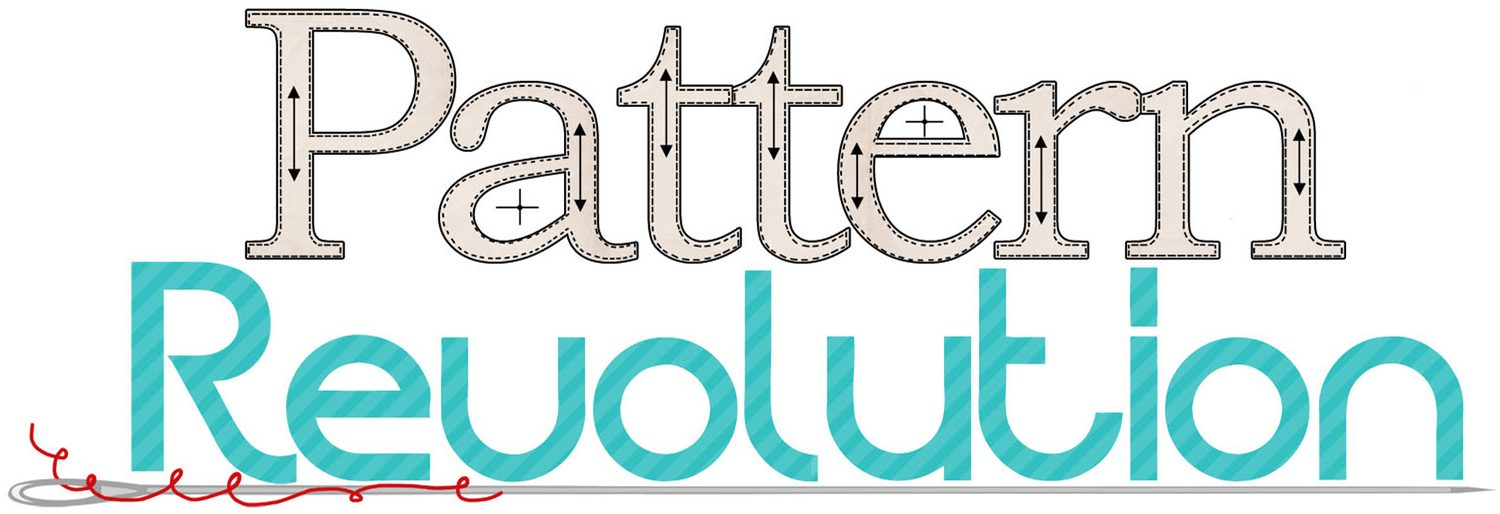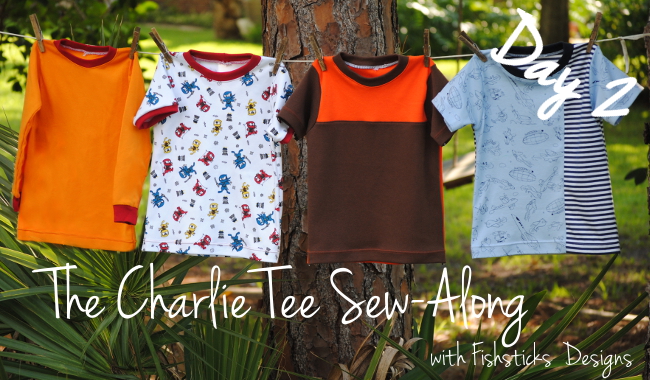
It's Day 2 of the Charlie Tee Sew-Along here at Pattern Revolution, and it's time to hem our shirts!
Yes! We
are going to hem before we sew. The biggest reason that I recommend hemming first when you sew knits is that it's going to give you a much nicer looking hem. Sewing something flat is always easier than sewing something that is in a loop. In the case of knits, you tend to get the most stretching when you sew over a seam. Since we're eliminating those side seams, you won't have that problem! Don't worry at all about it looking odd. I promise that if you go dig through your closet or child's dresser, you'll find that almost all ready-to-wear knits are sewn this way! And, I'd bet that you never noticed it!
Personally, I like hemming first because it's my least favorite part of sewing knits. When I first started sewing knits, I tried to finagle ways to use cuffs on everything! (Next week when we do the Charlie Hoodie, there will be no hemming!) This way, though, the part that I like the least is done first and out of the way. (It's not really that bad, though. I promise!)
I'm going to show you how to hem using a twin needle here. If you're not quite ready to try out the twin needle, head over to my blog, where you'll find instructions for using the triple stretch stitch to hem your knits:
Simple Knit Applique & Single Needle Hemming Tips. (There's also a great tutorial for knit appliques in that same post!)
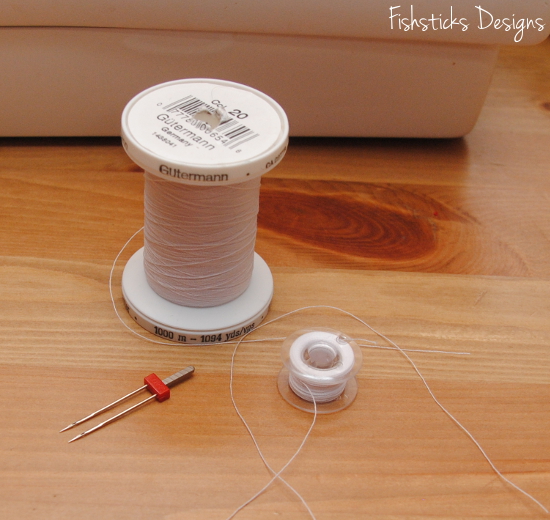
Let's get started! First you need a few tools: a twin needle (also referred to as a double needle), your regular spool of thread and a second source of thread (I use a bobbin). Since you're working with knits, it's best to use a ballpoint or stretch twin needle. Those are hard to find locally, but they are pretty easy to find online:
stretch twin needle,
ballpoint twin needle. I prefer the 4.0 mm twin needle -- that number refers to the measurement between the left and right needles. You can use a 2.5 mm if you'd like your stitches closer together.
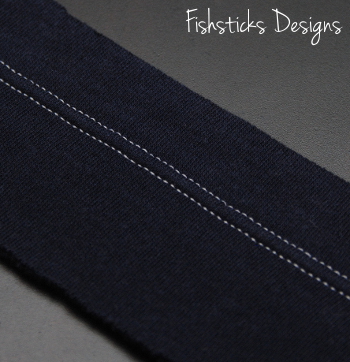
The reason that a twin needle is such a great option when hemming your knits is that it gives you two rows of stitches on the front (see above), and a nice stretchy zig-zag on the back (see below).

Some sewing machines, like mine, have a button or switch that needs to be pushed to change from single to double-needle sewing. Here's what that button looks like on my machine. Go ahead and press that button. Remove your single needle and replace it with the twin needle.

Many sewists put both thread sources on the pin that holds your regular spool. On my machine the threads tend to tangle when I do it this way.
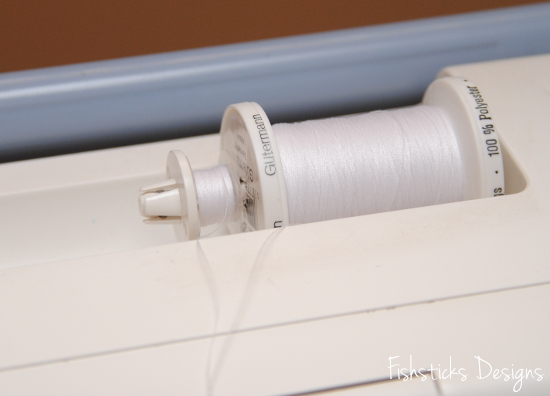
Some machines have a extra removeable pin just for a second spool of thread. I think mine did at one time, but I'm not sure where it's disappeared to. It's not a problem, though, since I'm using a bobbin for my second thread. I just pop that bobbin onto the bobbin-winding pin with the thread feeding towards the front of the machine.
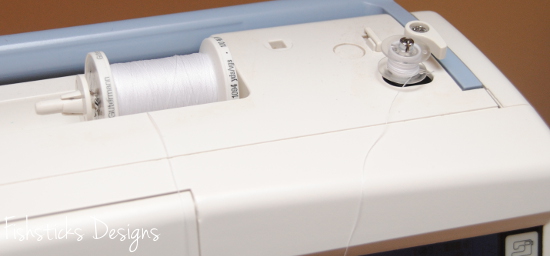
You can thread the twin needle by pulling both threads through as one. My machine is a little bit picky, though, and I've had to work with it until I found the best way to thread the twin needle. What I do is thread the left needle first from the spool of thread, then I press and hold that thread in place on top of the machine just before it enters the guides while I thread the right needle from the bobbin.
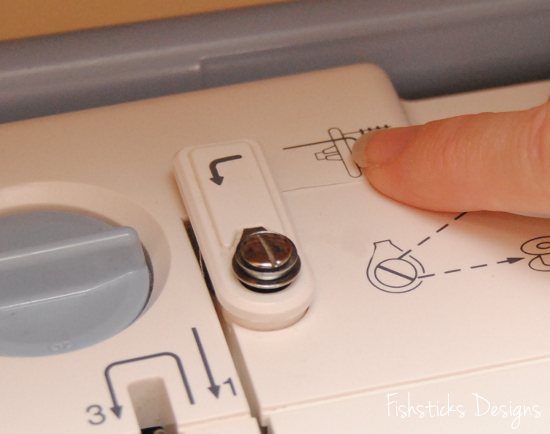
Once I have both needles threaded, I pull the threads back away from the machine as one.
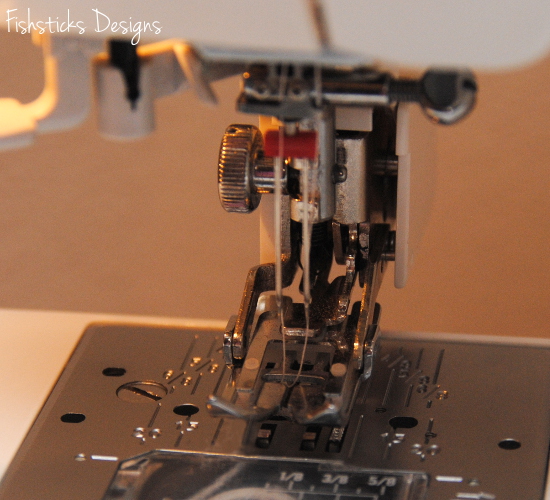
Now that your twin needle is threaded, we're ready to get hemming! I serge the raw edges of my hems, but that is purely for aesthetic reasons. (I like for the inside of my garments to look as nice as the outside.) Because knits don't fray, you can totally skip this step if you want to.
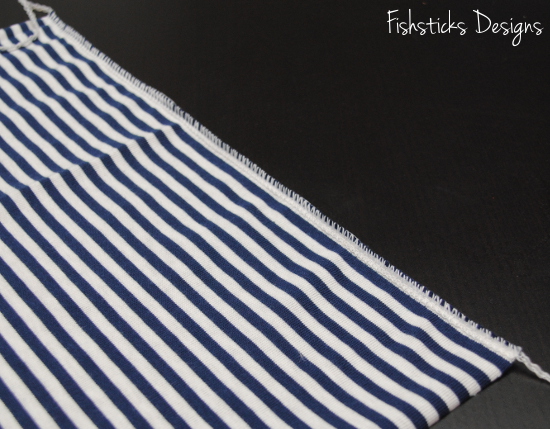
With a hot steam iron, press your hem allowance to the inside. If your knit is particularly stretchy or uncooperative, use a little spray starch when you iron.
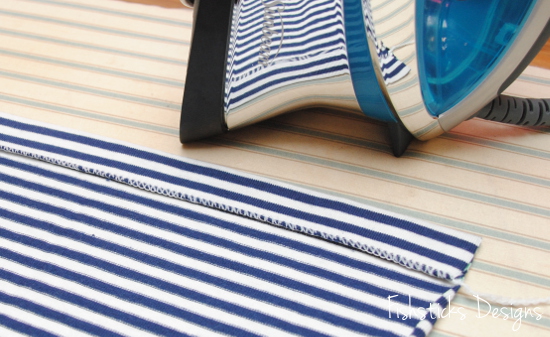
Because we're going to be stitching on the right side of the fabric, and I don't want to sew over my pins, I use long pins and position them so that the heads hang off of the folded edge. This way, I can make sure that the hem is pinned properly, and I can remove them as I get to them while I'm sewing.
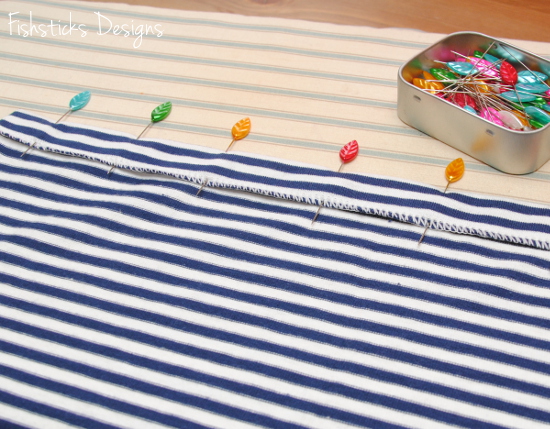
I like to start my hems about 1/2" in from the edge of the fabric. Set your stitch length to 3.0 or 3.5. (Shorter stitch lengths stretch fabrics.) I backstitch about 1/4", then stitch all the way across feeling through the fabrics to make sure that my stitching is falling just inside the raw edge on the underside of the fabric. I stop stitching about 1/4" from the opposite side, backstitch to 1/2" then sew forward again to the end. (Starting your stitching a bit in from the edge will help to keep your machine from "eating" the end of your knit fabrics. Backstitching to 1/2" will help make sure that you don't chop off your fastening stitches when you serge later.)
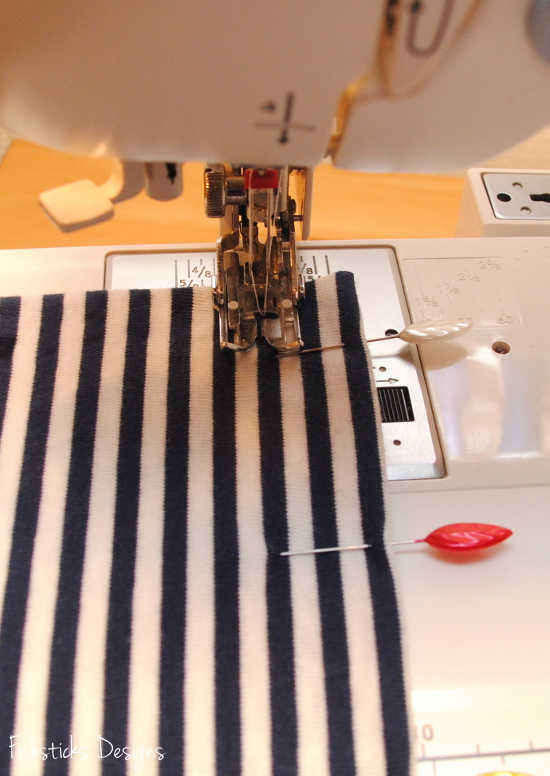
Be careful not to stretch or pull your fabrics as you're sewing. Just guide and let the feed-dogs pull them through. (This is much easier with a walking foot!) Pulling on your fabrics while you're sewing can lead to hems that look like this:
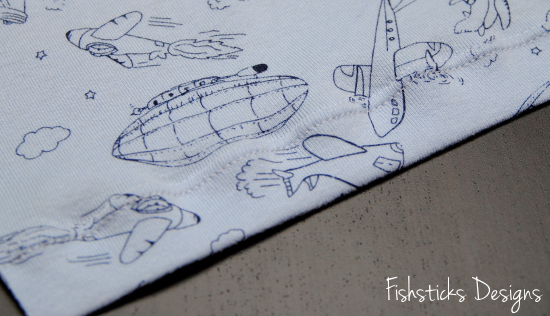
What you really want, though, is hems that look like this:
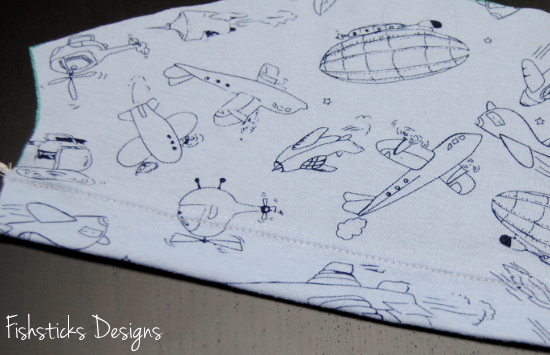
That wasn't too hard was it?
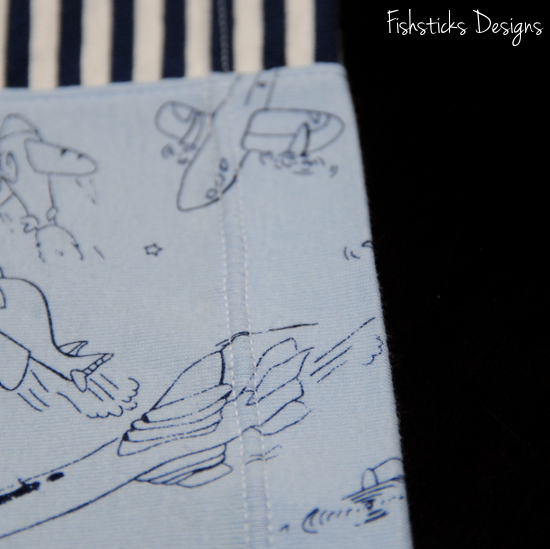
If you're sewing the Basic Tee go ahead and hem the front and back of your tee and both sleeves.
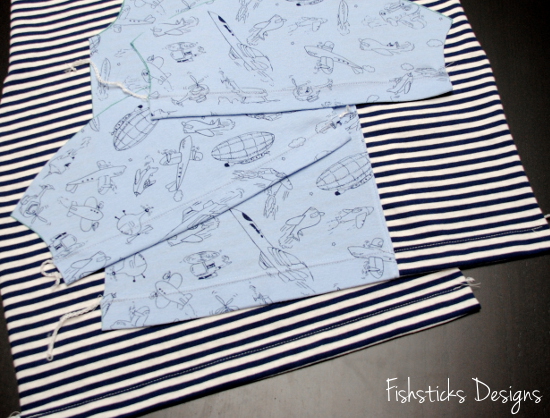
If you're sewing the Ringer Tee or Long-sleeve Tee, you'll just be hemming the front and back pieces. We'll sew bands on the sleeves later.
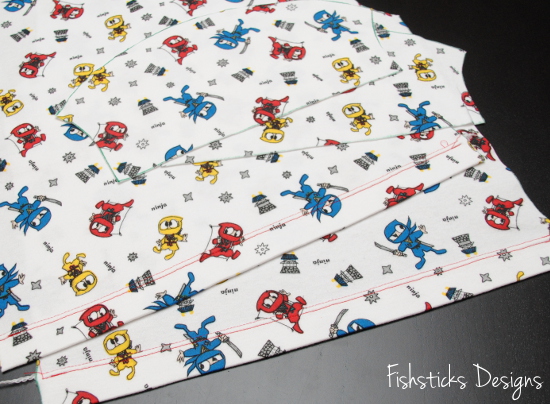
Once you get the hang of using a twin needle, you just may find that you fall in love with using accent threads to liven up an otherwise plain tee! I just love the way this looks!
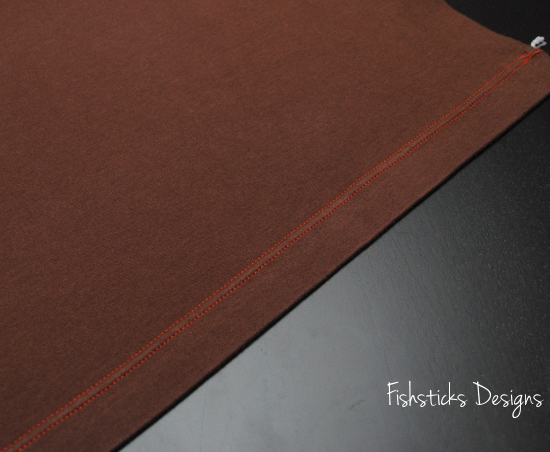
That's it for today! Tomorrow, we'll move on to sewing the shoulders together and adding the neckband.



















